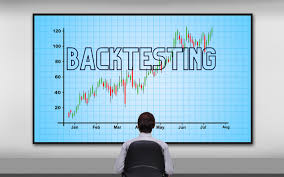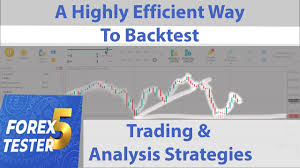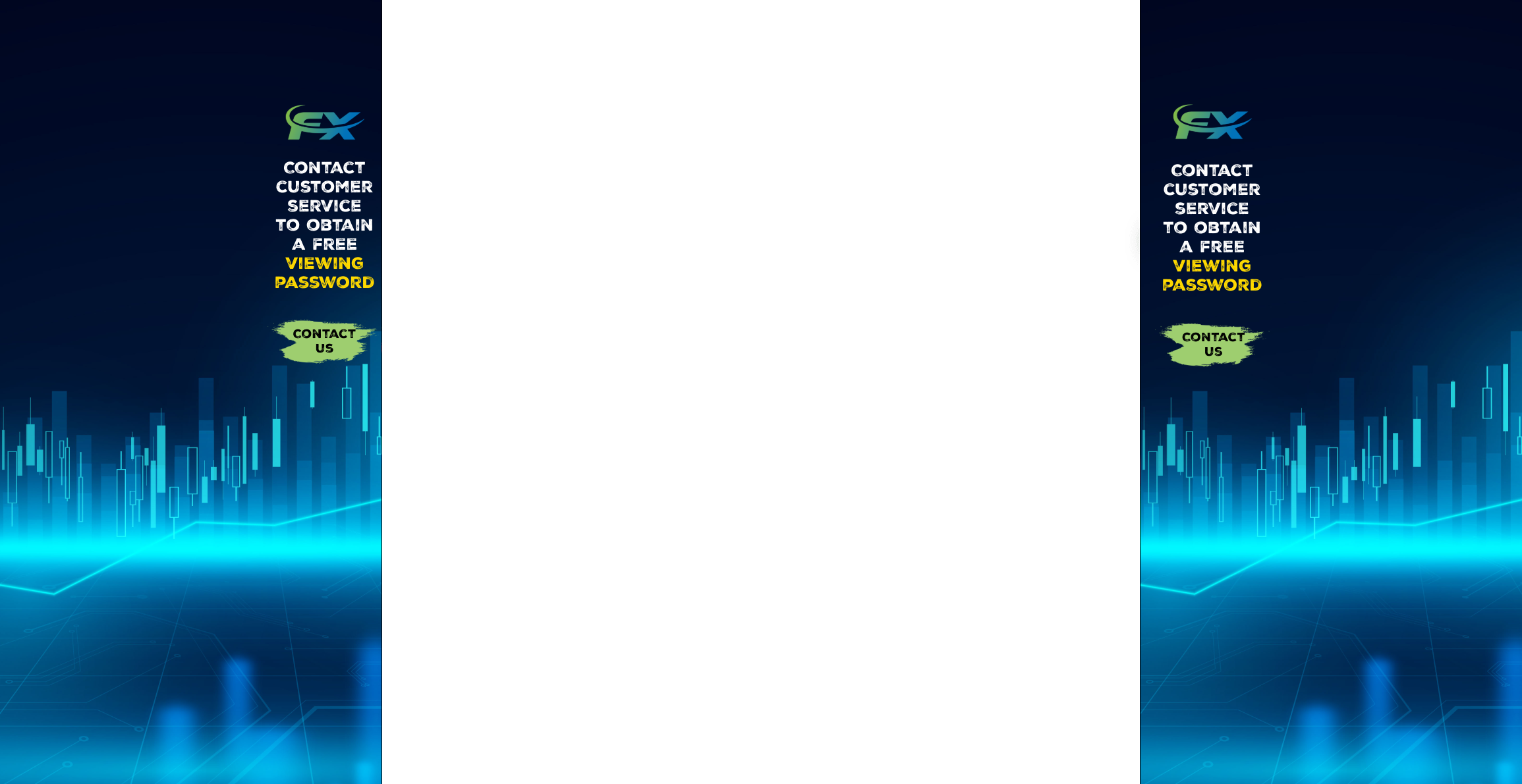
Backtesting is an essential process for any forex trader looking to optimize their strategies before risking real capital. With the right tools, traders can simulate market conditions and assess the performance of their strategies without the financial risk. Choosing the best backtesting software for forex can make all the difference in refining your approach and improving your trading results. Whether you're testing a scalping strategy, swing trading techniques, or even automated trading algorithms, having the right backtesting software ensures that you have the right data, features, and functionality to evaluate your methods effectively. In this guide, we’ll explore the top options available, along with key features, metrics, and platforms to consider when selecting the best forex backtesting software for your needs.
Key Features to Look for in Forex Backtesting Software
Selecting the best forex backtesting software begins with understanding its core features. Effective tools combine backtesting, optimization, reporting, and risk management, allowing traders to refine their strategies with precision and confidence.
Backtesting and Optimization Tools
A robust backtesting engine is the foundation of any forex backtesting software. It enables traders to simulate historical market data, refine strategies, and identify patterns that can increase profitability. Optimization tools elevate this process by allowing users to test multiple parameters efficiently.
Key benefits include:
Simulating historical data to test trading strategies over various conditions.
Parameter optimization, such as testing different stop-loss levels or entry triggers.
Generating insights into performance metrics like maximum drawdown and profit factor.
| Feature | Importance in Forex Backtesting | Examples |
|---|---|---|
| Backtesting engine | Tests strategies against past market data | MetaTrader 4, TradingView |
| Optimization tools | Refines parameters for maximum profitability | cTrader, NinjaTrader |
| Historical data support | Ensures accuracy and depth | Tick data, market depth |
Reporting and Analysis
The ability to generate detailed performance reports and trading logs is a critical feature in forex backtesting software. Reports should include key metrics such as win rate, Sharpe ratio, and trade expectancy to provide actionable insights.
Performance breakdowns highlight successful and unsuccessful trades.
Visual analytics, such as equity curves and heat maps, allow traders to identify trends.
Integration with platforms like MetaTrader 5 ensures compatibility and convenience.
Strategy Development and Automation
Forex backtesting software empowers traders to build and test strategies, often incorporating automated systems. With features like algorithmic script support (e.g., MQL4, Python), traders can deploy their strategies without manual intervention.
For example:
Design a trend-following strategy using indicators like moving averages.
Automate order execution based on predefined conditions.
Simulate automated systems using historical data to assess reliability.
Risk Management and Position Sizing
Effective risk management ensures long-term trading success. Backtesting software allows traders to simulate various risk parameters and optimize position sizing for each trade.
Use tools to test stop-loss and take-profit levels across strategies.
Analyze scenarios like scaling positions or employing trailing stops.
Calculate risk-reward ratios to assess the sustainability of strategies.
Charting and Visualization Tools
Advanced charting and visualization capabilities enhance the backtesting experience. Features like candlestick charts, moving averages, and Fibonacci retracements provide essential data insights.
Benefits include:
Identifying price action patterns and trends visually.
Comparing strategy performance through side-by-side visual analysis.
Integrating data overlays, such as market depth and historical ticks.
Top Platforms for Forex Backtesting
The right backtesting platform is crucial for developing successful forex trading strategies. Different platforms offer unique features suited to specific needs. Understanding the top platforms for backtesting can help traders make informed decisions based on their trading strategies, tools, and programming preferences.

MetaTrader 4 (MT4)
MetaTrader 4 (MT4) remains one of the most popular platforms for forex backtesting due to its robustness and reliability. Its powerful features allow traders to test and refine their strategies on historical data before real-time implementation.
Comprehensive backtesting engine: Allows for testing of forex strategies using historical data with adjustable parameters.
Optimization tools: Automated strategies can be optimized to ensure the best settings.
Multi-currency testing: Traders can test strategies on various currency pairs simultaneously.
MetaEditor integration: This enables custom script creation and modification for advanced backtesting and strategy development.
Performance metrics: Provides critical data such as win rate, profit factor, and maximum drawdown.
MetaTrader 5 (MT5)
MetaTrader 5 (MT5) offers expanded backtesting capabilities that improve upon MT4. It's designed for traders looking for more advanced features and multithreading support.
Backtesting Enhancements: MT5 can backtest multiple strategies simultaneously, improving efficiency.
Multithreading Optimization: MT5 supports multithreading for faster testing of strategies.
Extended Timeframes: Includes more timeframes for backtesting, giving traders a more detailed analysis.
Expanded Report: Offers enhanced performance reporting, including metrics such as the Sharpe ratio and Sortino ratio.
Comparison of MT4 and MT5 Backtesting Capabilities
| Feature | MT4 | MT5 |
|---|---|---|
| Backtesting Speed | Single-threaded | Multi-threaded for faster results |
| Strategy Optimization | Basic optimization | Advanced optimization tools |
| Timeframes | Limited | More timeframes for detailed testing |
| Performance Reports | Basic performance metrics | Detailed reports with additional metrics |
cTrader for Backtesting
cTrader is a rising star in the forex backtesting landscape, known for its user-friendly interface and powerful testing features for algorithmic traders.
Intuitive interface: Provides an easy-to-use platform for both beginners and experienced traders.
Automated backtesting: Full support for automated trading strategies with precise results.
Optimization tools: Offers advanced strategy optimization with a focus on refining parameters.
Cloud-based testing: cTrader's cloud infrastructure speeds up backtesting by allowing the use of remote resources.
NinjaTrader and TradingView
Both NinjaTrader and TradingView are popular platforms, each offering unique backtesting capabilities tailored to different trader needs.
NinjaTrader: Known for its customizable backtesting tools and deep integration with trading algorithms. Traders can test strategies on various markets including forex, futures, and stocks.
Customizable strategy testing
Multi-instrument testing
Advanced charting and analysis
TradingView: A web-based platform that is ideal for traders seeking a visual, intuitive backtesting experience.
User-friendly interface for backtesting strategies on forex and stocks
Real-time and historical data testing
Charting and visualization tools integrated with backtesting features
Comparison of NinjaTrader and TradingView Backtesting Tools
| Feature | NinjaTrader | TradingView |
|---|---|---|
| Customizability | Highly customizable, supports scripts | Limited customization, focuses on ease of use |
| Market Access | Supports forex, futures, and stocks | Primarily forex and stocks |
| Backtest Speed | Fast backtesting with optimization tools | Slower, but suitable for quick strategy testing |
| Charting Tools | Advanced charting with multiple indicators | Basic charting with integrated strategy testing |
These platforms offer varied features, catering to different trader preferences. Each platform’s tools can be used to create, test, and refine strategies to help traders reach their financial goals. Choosing the right platform is essential, and it depends on the specific needs of the trader.

Backtesting for Different Forex Trading Strategies
Backtesting is an essential tool for forex traders looking to perfect their strategies. By testing a trading strategy against historical data, traders can determine its effectiveness before actually implementing it. This section explores how backtesting can optimize a variety of forex strategies, from scalping to automated trading.
Scalping Strategies and Backtesting
Backtesting is crucial for scalping strategies, where speed and execution efficiency are vital. Scalping requires quick reactions to minute market changes, making it essential for traders to test their strategies on high-frequency data.
Speed and Execution: Scalping strategies depend heavily on the ability to execute orders within milliseconds. Backtesting software allows traders to simulate rapid trade executions, helping to identify potential slippage or delays.
Optimization: Backtesting can identify the best timeframes and market conditions for scalping strategies, ensuring maximum efficiency and profitability.
Realistic Simulation: Traders can use backtesting tools to simulate real-world market conditions, including spreads and slippage, to fine-tune strategies.
Day Trading and Backtesting
For day traders, the key lies in determining optimal entry and exit points. Backtesting allows traders to evaluate various entry strategies and see how they would have performed in the past.
Entry Points: Backtesting helps determine the best times to enter the market, based on historical price data.
Exit Points: Identifying when to exit a trade is just as crucial. Backtesting helps in determining the ideal exit points for maximizing profits and minimizing losses.
Risk Management: Traders can test their risk-reward ratios and stop-loss strategies through backtesting to find what works best.
Swing Trading in Forex
Swing trading focuses on capturing short- to medium-term gains by taking advantage of price swings. Backtesting helps traders determine the most effective timeframes and indicators for this style.
Optimal Timeframes: Swing traders can use backtesting to find the best timeframes for holding positions, whether it’s a few hours or several days.
Technical Indicators: Backtesting allows traders to see which indicators, like moving averages or RSI, provide the best signals for entry and exit.
Trend Following Strategies
Backtesting is a powerful tool for trend-following traders, as it helps to identify the most profitable trends and optimize entry and exit strategies.
Identifying Trends: Traders can use backtesting to identify when trends are likely to emerge, allowing them to align their strategies with the market's direction.
Optimization of Indicators: Backtesting allows for the fine-tuning of indicators such as moving averages and trendlines, ensuring the trader follows the trend at the right time.
News Trading and Backtesting
News trading relies on market reactions to news events, making it complex to backtest. However, backtesting software can simulate market movements based on past news events.
Live Data Simulation: Traders can use real-time data in backtesting to simulate how the market would have reacted to major news events.
Timing: Backtesting helps determine the optimal timing for entering and exiting news trades based on historical data.
Automated Trading Strategies
Automated trading strategies benefit greatly from backtesting, as it allows traders to refine their algorithms before live trading.
<step 1> Strategy Development: Traders create algorithms using programming languages like MQL4, MQL5, or Python.
<step 2> Backtest on Historical Data: The strategy is then backtested using historical forex data to see how it would have performed in the past.
<step 3> Optimization: The strategy is fine-tuned to improve profitability, incorporating performance metrics such as win rate and maximum drawdown.
Understanding Performance Metrics for Forex Backtesting
In Forex backtesting, performance metrics are crucial for evaluating the profitability and risk of a trading strategy. Metrics like profit factor, maximum drawdown, win rate, Sharpe ratio, and others help traders refine their approaches. Accurate interpretation of these metrics ensures better trading decisions and long-term success. Below, we dive deeper into these key performance metrics and their impact on Forex trading.
1. Profit Factor and Maximum Drawdown
Profit Factor: A ratio of gross profits to gross losses. A profit factor greater than 1.0 indicates a profitable strategy, while a factor lower than 1.0 signals a losing strategy.
Maximum Drawdown: Represents the largest peak-to-trough loss during a specific period. It helps assess the risk involved in a trading strategy.
Importance in Strategy Evaluation:
Profit Factor helps determine the overall profitability of a strategy.
Maximum Drawdown shows the risk, indicating how much capital is at risk before recovery is possible.
| Metric | Description | Ideal Value |
|---|---|---|
| Profit Factor | Measures profitability vs. losses | > 1.0 |
| Maximum Drawdown | Largest loss from peak to trough | Smaller values preferred |
| Risk/Reward Ratio | Measures expected returns per unit of risk | > 1.0 |
2. Win Rate and Sharpe Ratio
Win Rate: The percentage of winning trades out of total trades.
Sharpe Ratio: A risk-adjusted return measure, comparing the return to the volatility of the strategy.
How They Influence Trading Decisions:
A higher Win Rate generally indicates that a strategy is more likely to succeed in the short term.
The Sharpe Ratio allows traders to assess whether the return is worth the risk, with a higher ratio signifying better risk-adjusted returns.
3. Sortino Ratio: A Better Risk-Adjusted Metric
The Sortino Ratio is a more refined version of the Sharpe ratio, specifically targeting downside risk. Unlike the Sharpe ratio, which considers all volatility, the Sortino ratio only factors in the negative volatility. This makes it more useful for traders who are primarily concerned with protecting their capital from downside risk.
Comparison with Sharpe Ratio:
Sharpe Ratio: Includes both upside and downside volatility, potentially overestimating the risks.
Sortino Ratio: Focuses exclusively on negative volatility, making it more relevant for strategies that prioritize risk management.
4. Trade Expectancy and Risk-Reward Ratio
Trade Expectancy: A formula that calculates the expected amount a trader can expect to gain or lose per trade on average.
Risk-Reward Ratio: A ratio comparing the amount of risk to the potential reward, helping traders to determine if the trade is worth taking.
How They Work Together:
A high risk-reward ratio means that the trader expects significant profits relative to the risk they are taking.
Trade Expectancy calculates how realistic this expectation is based on historical data.
5. Execution Speed and Latency Impact
Execution Speed: Refers to how quickly a trade is executed after a signal is triggered.
Latency: The delay between when a trade order is placed and when it is executed.
Impact on Backtest Accuracy:
In high-frequency trading strategies, execution speed and latency play a crucial role in determining whether backtest results are realistic. Delays in execution may lead to substantial discrepancies between backtested and real-world performance.
Reducing latency and optimizing execution speed ensures that the backtest results are a more accurate representation of real-market conditions.
Data Providers for Forex Backtesting
The quality of data used in backtesting can significantly affect the accuracy of strategy performance. Reliable data sources are essential for effectively testing forex strategies. In this section, we’ll dive into the various types of data you need to consider, including historical data, live data, quote data, and market depth, and the role each plays in backtesting.
1. Historical Data and Its Importance
Historical data provides a foundational basis for testing trading strategies over extended periods. Its role is vital for assessing how a strategy would have performed under various market conditions.
Reliability: Historical data must be free from errors like missing data or incorrect time stamps, as these can distort backtest results.
Sources: Common sources include data providers like MetaTrader 4, MetaTrader 5, and specialized services such as Quandl or Kite.
Use: This data allows you to simulate past market conditions, helping you gauge the effectiveness of your strategies and make informed decisions for future trading.
2. Real-time Data for Live Testing
Real-time data is essential for strategies that transition from backtesting to live trading. It allows traders to test strategies under real market conditions, considering slippage, latency, and order execution in real-time.
Essential for Live Testing: Real-time data ensures that your strategy adapts to current market trends.
Sources: Data from TradingView, cTrader, and brokers like Interactive Brokers and FXCM offer live feeds for effective strategy testing.
Performance Monitoring: Real-time data helps track strategy performance in an actual trading environment, refining tactics based on real-world conditions.
3. Accurate Tick Data
Accurate tick data is the most granular form of data available, reflecting every market movement. This level of precision is necessary for high-frequency and scalping strategies, where every tick can impact the strategy’s profitability.
<step 1> Key Role: Tick data enables highly accurate backtesting by replicating real-time market conditions as closely as possible.
<step 2> Challenges: Collecting accurate tick data can be costly, as it requires high-frequency updates.
<step 3> Sources: Brokers like Dukascopy and platforms such as MetaTrader 4 or NinjaTrader are popular sources for tick data.
| Data Type | Importance | Common Sources |
|---|---|---|
| Tick Data | High precision, crucial for scalping | Dukascopy, MetaTrader 4, NinjaTrader |
| Historical Data | Provides a basis for backtesting | MetaTrader 5, Quandl, Interactive Brokers |
| Real-time Data | Necessary for live testing and performance evaluation | TradingView, FXCM, Interactive Brokers |
4. Market Depth and Data Feeds
Market depth data gives insights into the supply and demand at various price levels, offering more than just price and volume information. It's particularly useful for liquidity-intensive instruments like forex pairs.
Liquidity Insights: Market depth data helps traders gauge market conditions, especially for large trades that could impact price movement.
Data Feeds: Platforms like NinjaTrader and cTrader provide market depth feeds, ensuring that backtesting strategies account for liquidity factors.
Relevance: Understanding market depth is critical for executing large orders without causing significant slippage.
Programming Languages for Customizing Backtesting Strategies
Custom backtesting strategies are essential for traders looking to optimize their trading systems. Using the right programming language, traders can fine-tune their strategies, automate their testing processes, and analyze results more efficiently. This section explores the programming languages necessary for custom backtesting strategies.
MQL4 and MQL5 for MetaTrader Platforms
MQL4 and MQL5 are the primary programming languages used on MetaTrader platforms (MT4 and MT5). They are specifically designed for creating custom indicators, Expert Advisors (EAs), and automated trading systems. Here are key highlights:
MQL4: Primarily used for MetaTrader 4, it is simpler and more beginner-friendly. It allows traders to develop custom indicators, backtest strategies, and automate trading.
MQL5: The upgraded version used in MetaTrader 5, it supports more advanced features such as multi-currency analysis, advanced charting tools, and faster execution.
Backtesting Capabilities: Both languages enable robust backtesting of trading strategies, allowing traders to simulate trades on historical data to analyze performance metrics like profit factor, maximum drawdown, and win rate.
In essence, MQL4 and MQL5 are critical for traders using MetaTrader platforms to optimize their trading systems.
Python for Backtesting Algorithms
Python has gained popularity in the forex industry due to its simplicity and versatility. It provides traders with the ability to create advanced backtesting systems and integrate external libraries to improve analysis. Here’s a closer look:
Libraries for Backtesting: Python offers several libraries, including
Backtrader,Zipline, andPyAlgoTrade, to facilitate backtesting and strategy development.Data Integration: With Python, traders can integrate external data sources (such as historical price data, real-time data feeds, and market depth) to backtest strategies more accurately.
Algorithmic Trading: Python's simplicity allows traders to focus on developing sophisticated algorithms without worrying too much about coding syntax.
Python is ideal for traders who want to build custom, high-performance backtesting systems with deep integration capabilities.
C++ and C# in Forex Backtesting
C++ and C# are popular choices for building high-performance backtesting engines, particularly in professional or institutional trading. These languages offer unparalleled speed and are highly efficient for handling large datasets in real-time backtesting.
C++: Known for its speed and efficiency, C++ is widely used for real-time execution in high-frequency trading and complex backtesting scenarios. It allows for low-latency processing and accurate simulation of live market conditions.
C#: As a powerful, object-oriented programming language, C# is ideal for creating robust trading systems with real-time analysis capabilities. It’s also commonly used in platforms like NinjaTrader and cTrader.
Real-Time Data Analysis: Both C++ and C# are highly effective at processing large volumes of data quickly, making them perfect for analyzing tick-level data in real-time.
For traders who need high-performance backtesting engines with low latency, both C++ and C# are excellent choices.
Conclusion: Choosing the Best Forex Backtesting Software
Selecting the best forex backtesting software is essential for traders aiming to develop effective and efficient trading strategies. The right software enables traders to test different forex trading strategies accurately, evaluate performance metrics such as profit factor, win rate, and maximum drawdown, and access high-quality historical data for simulation. A combination of powerful trading platforms like MetaTrader 4 and MetaTrader 5, along with advanced programming languages such as MQL4, MQL5, and Python, can significantly enhance the backtesting process. By continuously testing, optimizing, and improving strategies, traders can stay ahead in the dynamic and fast-moving forex market, ultimately maximizing their trading success.
The best forex backtesting software depends on individual needs, but platforms like MetaTrader 4, MetaTrader 5, and TradingView are popular among traders for their backtesting features.
Backtrader and Zipline are excellent choices for algorithmic traders using Python for backtesting.
Backtesting allows traders to simulate trading strategies on historical data, providing insights into their effectiveness without risking real capital.
It helps traders evaluate performance metrics like sharpe ratio, maximum drawdown, and profit factor.
Yes, Python is widely used for developing complex backtesting systems. Libraries like Backtrader, Zipline, and PyAlgoTrade can be integrated for enhanced backtesting capabilities.
It’s suitable for advanced backtesting with external data sources and real-time market feeds.
Profit factor
Maximum drawdown
Win rate
Sharpe ratio
Historical data providers such as TickData, Kaggle, and Quandl are highly recommended for accurate backtesting simulations.
MetaTrader platforms also provide built-in real-time data for backtesting purposes.
While it is not absolutely necessary, using programming languages like MQL4, MQL5, C++, or Python significantly enhances the customization and accuracy of backtesting.
These languages allow traders to create personalized Expert Advisors (EAs) and optimize their strategies.
MetaTrader 4 (MT4) offers an intuitive interface, backtesting capabilities, and supports the use of custom Expert Advisors (EAs) written in MQL4.
It also provides historical data for testing various trading strategies and assessing performance metrics.
Ensure the data is accurate, complete, and real-time to simulate live market conditions.
Look for data providers that offer tick data, market depth, and historical data that closely reflect actual market movements for the best results.






